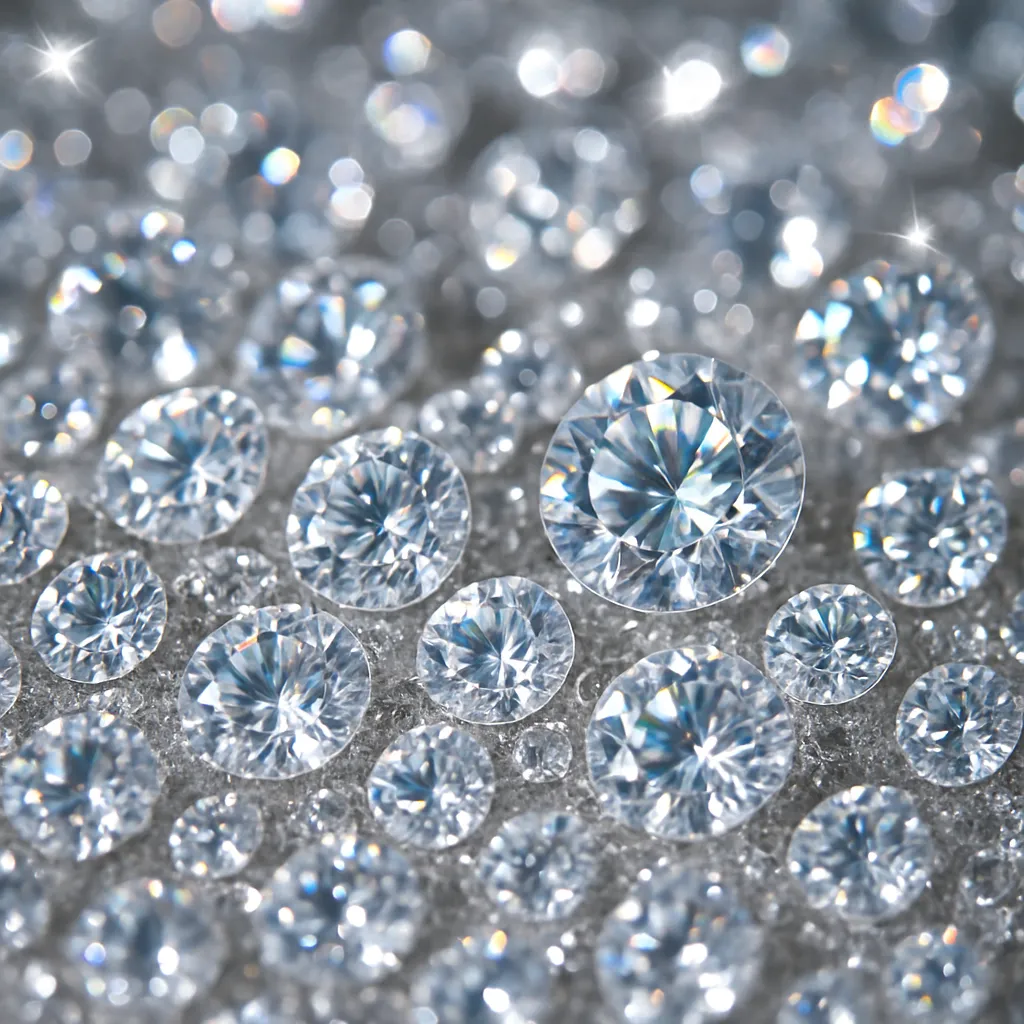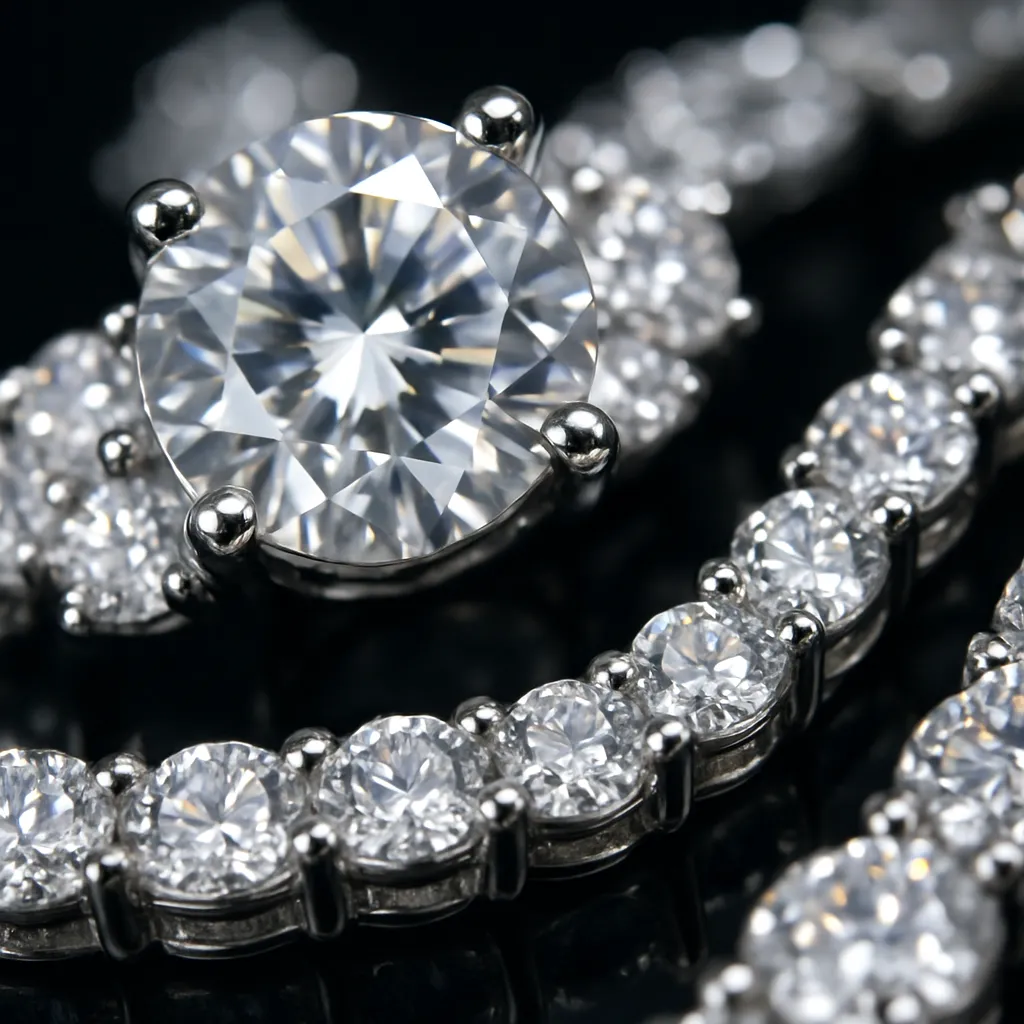Cubic zirconia (CZ) has evolved from being just a diamond simulant to a beloved gem in its own right. Created under lab-controlled conditions, CZ offers stunning clarity, consistency, and brilliance-all at a fraction of the cost of natural diamonds. Beyond affordability, its popularity is driven by conscious consumers, creative jewelers, and stylists looking for sustainable sparkle without sacrificing style.
Whether you’re a bespoke fashionista designing a custom set, a budget-savvy engagement-ring shopper, or an artist craving flash with ethical roots, this versatile gemstone deserves a closer look.
What Is Cubic Zirconia?
Cubic zirconia is a synthetic gemstone made from zirconium dioxide (ZrO2), first synthesized in 1976 by Soviet scientists. Unlike diamonds carbon-based and naturally occurring-CZ is produced in labs, allowing for consistent high quality. Though not a diamond, its visual appeal is undeniable often indistinguishable from real diamonds to the untrained eye.
For an overview of other lab-created gems, see our guide to lab-grown diamond necklaces.
Is Cubic Zirconia a Real Diamond?
No-CZ is not a diamond, but it’s commonly used as a diamond simulant. It can be cut and polished to mimic diamond brilliance, yet it lacks diamond hardness and optical dispersion. Still, many appreciate CZ for its aesthetics and ethics, especially in trend-driven designs where price and sustainability matter.
The American Gem Society FAQ confirms that while CZ isn’t a diamond, its value lies in affordability and versatility.
What Does “CZ” Mean on Jewelry?
A “CZ” stamp indicates cubic zirconia. This transparency helps buyers understand what they’re purchasing.
Properties and Benefits of Cubic Zirconia
Durability on the Mohs Scale
CZ scores 8 – 8.5 on the Mohs scale, durable for daily wear (diamonds score 10). Source: GIA.
Longevity with Proper Care
High-quality CZ can last 5 – 10 years or more. Avoid chlorine, store separately, and clean gently.
CZ vs Diamond: Key Differences
| Feature | Diamond | Cubic Zirconia |
|---|---|---|
| Composition | Carbon | Zirconium dioxide |
| Mohs Hardness | 10 | 8 – 8.5 |
| Sparkle (Dispersion) | ≈ 0.044 | ≈ 0.066 |
| Cost | $$$ – $$$$$ | $ |
Want more options? Read The Value of Used Tiffany Jewelry to see how CZ compares in price and style.

How to Tell the Difference Between CZ and Diamond
- Weight: CZ is ~75 % heavier than an equal-size diamond.
- Clarity: CZ is typically flawless; diamonds often contain inclusions.
- Refractive Index: Diamonds sparkle more due to a higher RI (2.42 vs 2.15).
- Thermal Conductivity: Diamonds conduct heat; CZ does not-use a diamond tester.
High-Quality CZ for Custom Jewelry
CZ shines in custom designs-from minimalist studs to elaborate cocktail rings. Laser-faceted stones set in solid gold or platinum create maximum impact.
See how we style CZ in micro-wedding looks: Jewelry Coordination Tips for Micro-Weddings.
Who Should Wear Cubic Zirconia?
Fashionistas & Stylists
Ideal for ever-changing wardrobes-affordable, bold luxury that complements bespoke fashion.
Budget-Conscious Couples
Focus on symbolism over price. Extravagant settings, accessible costs.
Artists & Performers
CZ lights up stage and screen, minimizing financial risk.
The Tucson Connection
Tucson, Arizona hosts the world’s largest gem show, and CZ has earned a spot among local galleries blending tradition and experimentation.
Explore ethical shopping in our Ethically Made Jewelry in Phoenix guide.
Choosing the Right Jeweler
Look for lab certifications, clear returns, and educators. Quantum Qarat offers personal consultations, fair pricing, and curated CZ collections.
Ready to chat? Book an appointment and explore custom cubic zirconia options.
Conclusion
Cubic zirconia isn’t merely a diamond alternative-it celebrates affordable luxury, ethical craftsmanship, and modern style. With care and thoughtful design, CZ offers sparkling possibilities.
Explore more:

